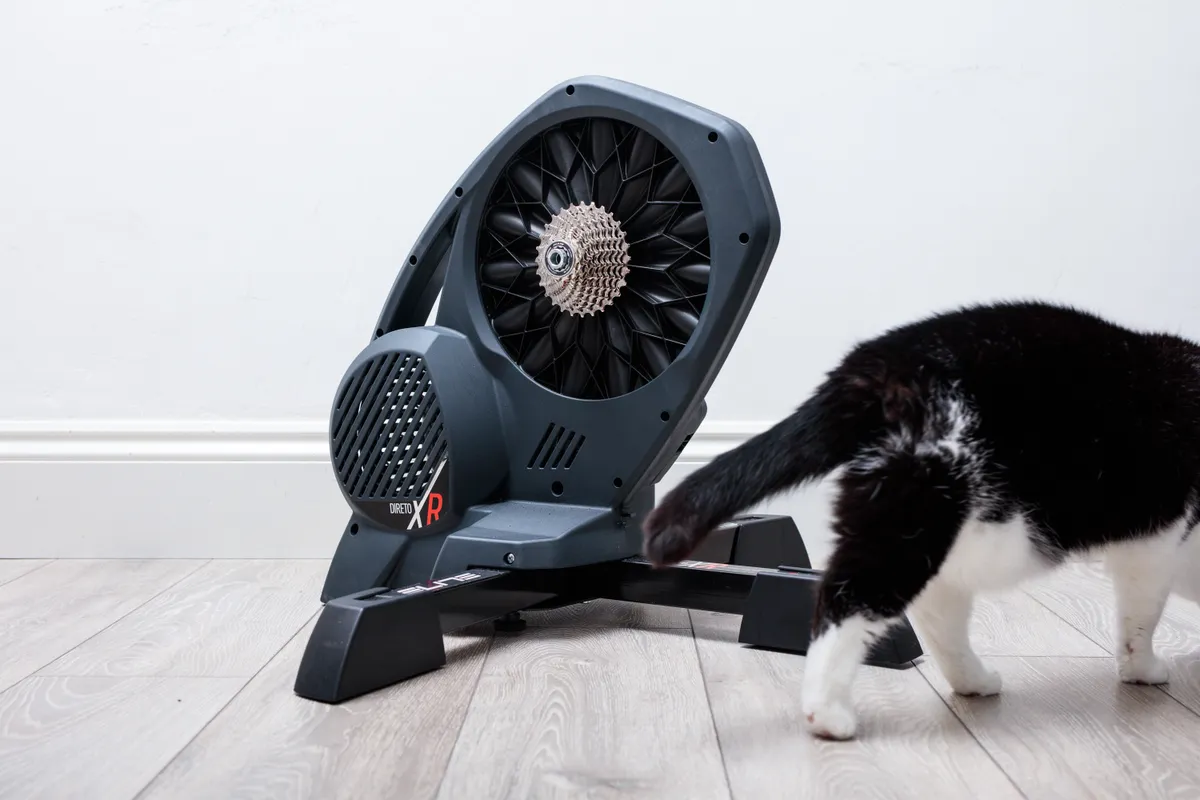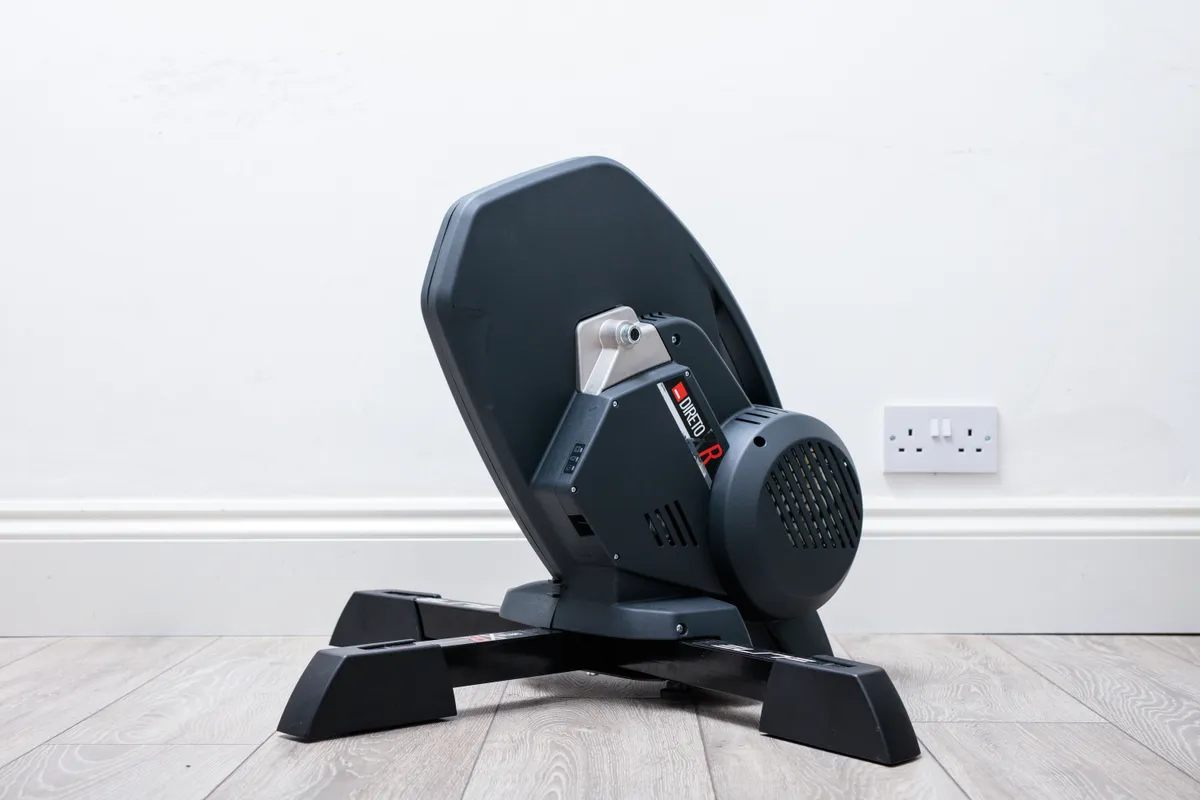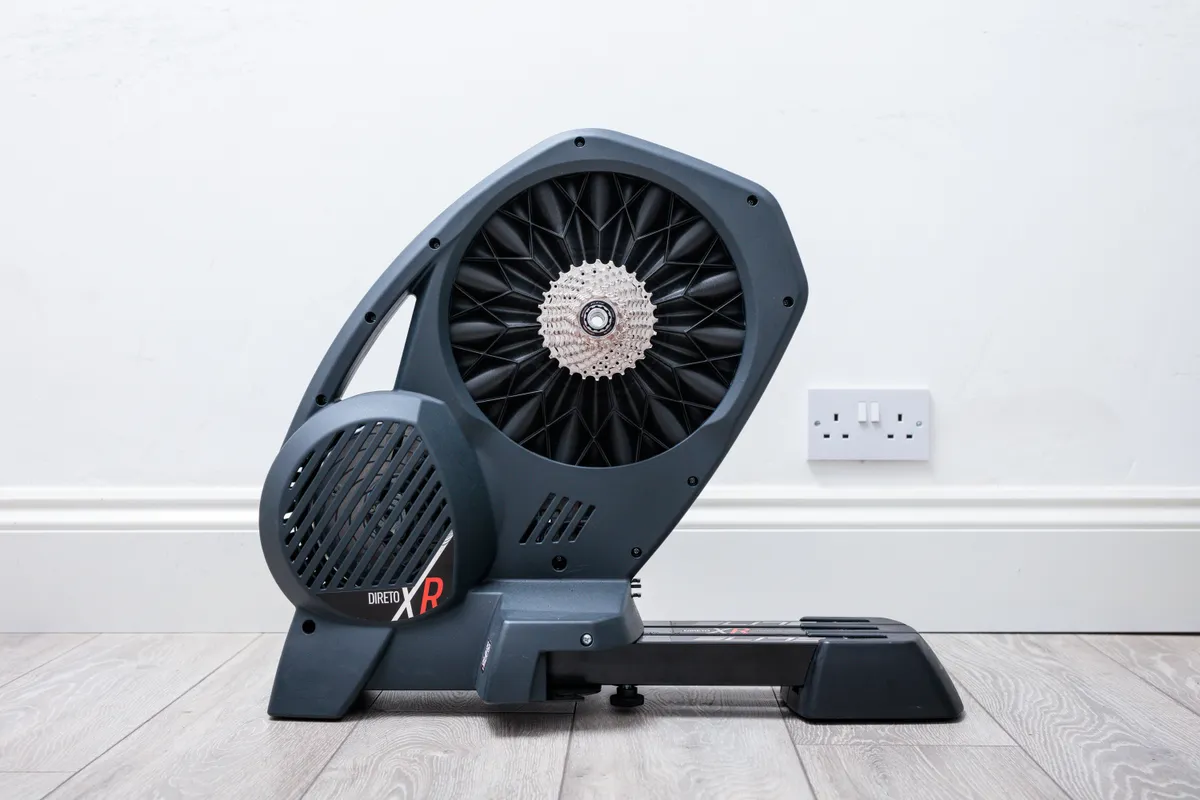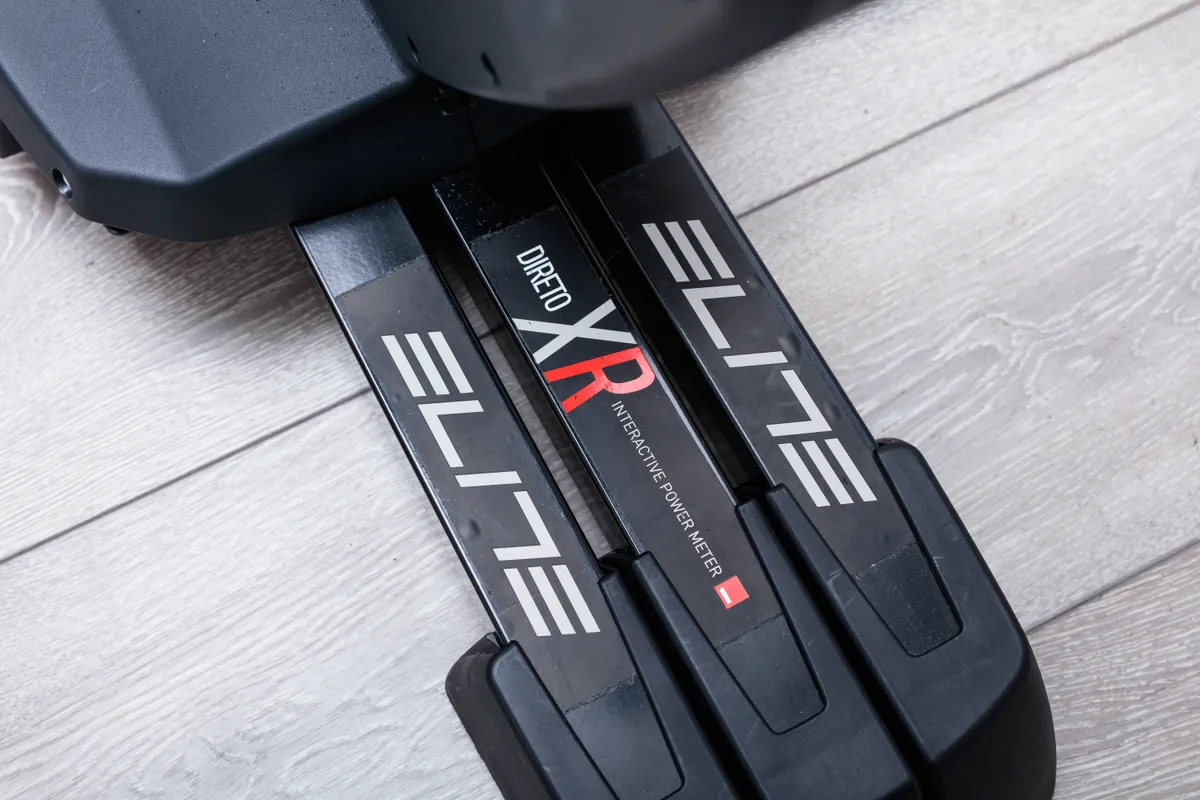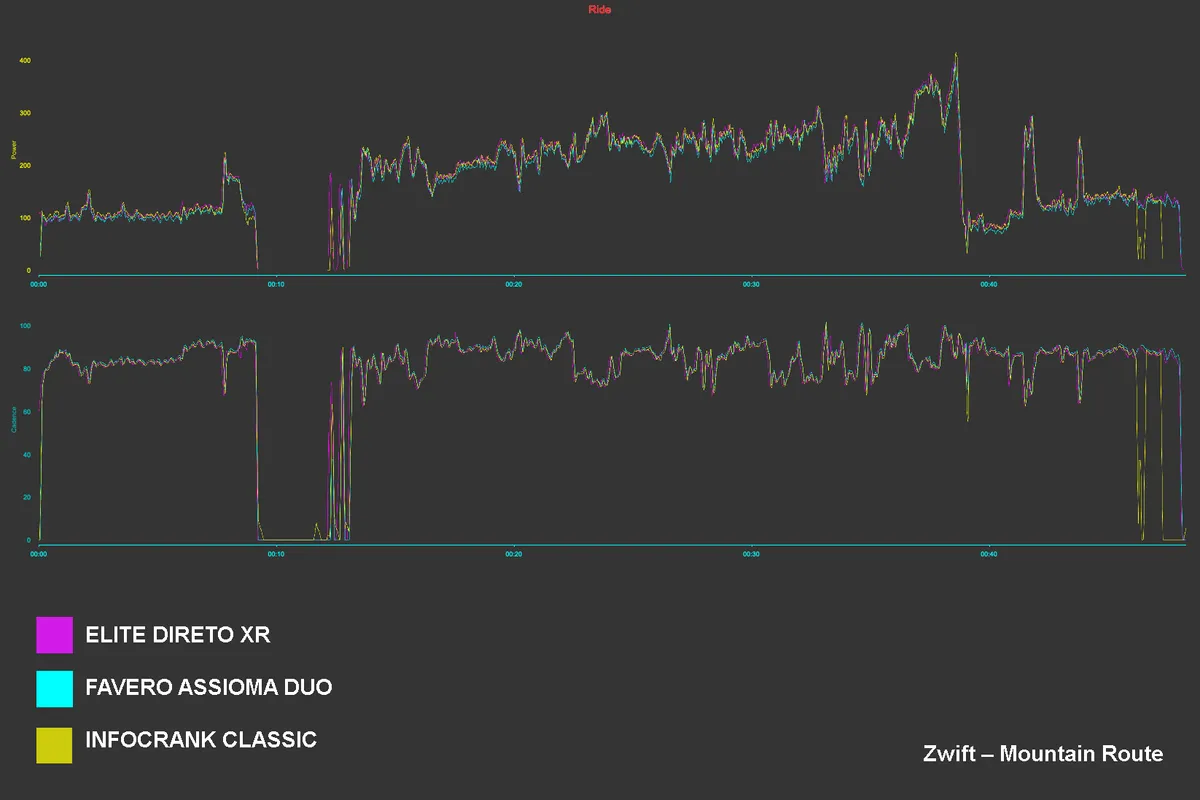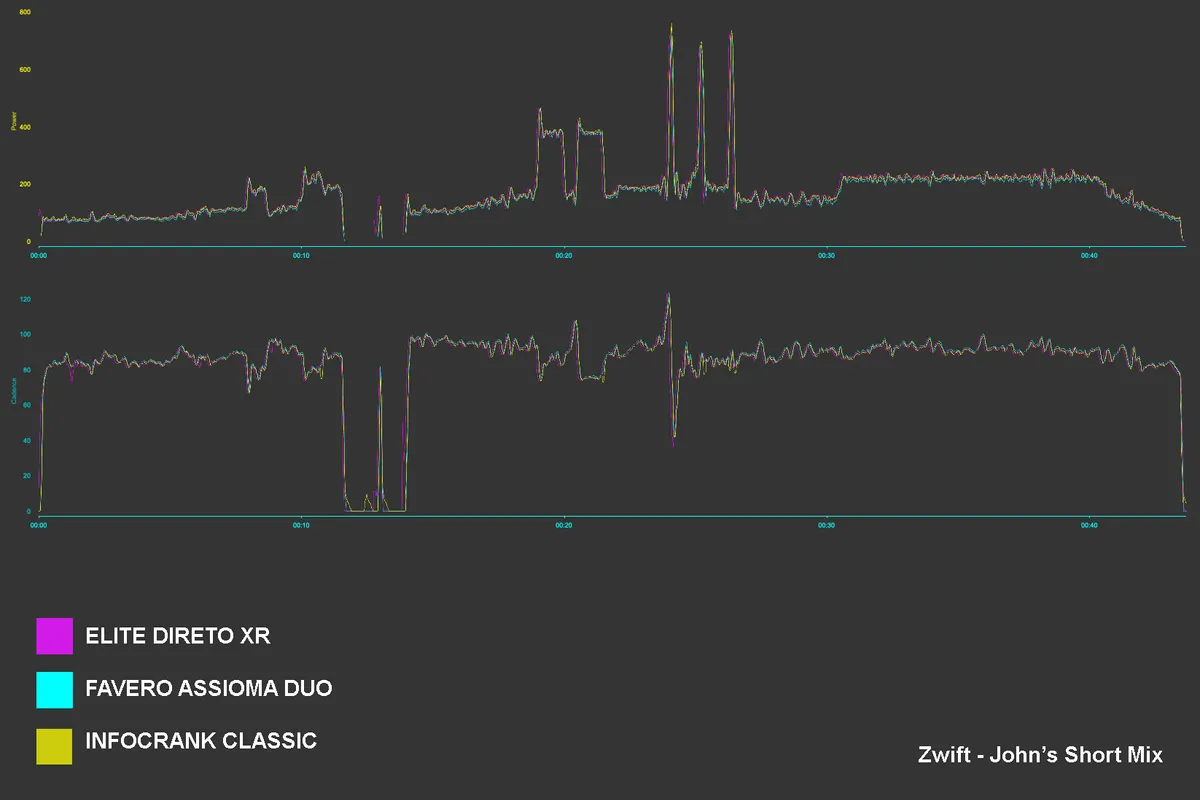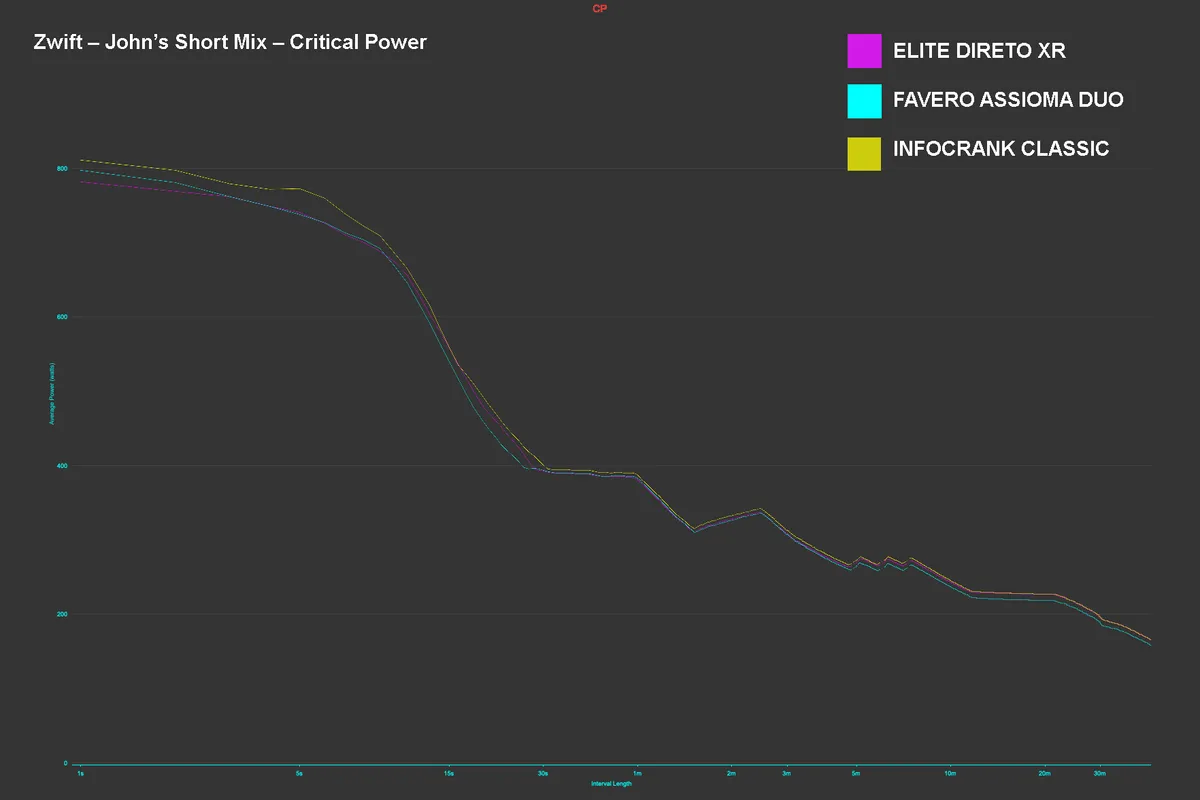The Direto XR is an update to Elite’s Direto X direct-drive smart trainer, which built upon the success of its original Direto.
Priced between the cheaper Suito and the top of the range Drivo II, the Direto XR aims to provide more pedalling resistance and greater power accuracy than the Suito, but be more user-friendly than the Drivo II.
As you’d expect, it’s compatible with all of the popular indoor cycling apps such as Zwift, The Sufferfest, RGT Cycling, Rouvy and TrainerRoad.
Priced at £824.99/ €849.99 / $949.99, it’s a solid performer and also undercuts key competitors like the new Wahoo Kickr – though, there are some small trade-offs for this.
Elite Direto XR details
Outwardly, it’s more of the same with the Direto XR. It retains a largely plastic outer-construction, albeit with metal legs. This has both positive and negative implications.
It means the Direto XR, at 15.8kg with a cassette installed, is considerably lighter than something like the Wahoo Kickr (21.9kg), weighing just over 6kg less.
On the one hand that’s great for someone, like me, with 'cyclists' arms', who finds moving heavy objects around the house a genuine struggle.
On the other, it gives the Direto XR a less premium feel. While the Kickr and Kickr Core feel hefty, solid and indestructible, the Direto XR feels a little less so.
Somewhat confusingly, Elite’s cheaper Suito smart trainer actually uses more metal in its outer construction and, I think, looks and feels of higher quality than the Direto XR as a result.
Whether this has any actual effect on long-term durability or performance is hard to say. Given it uses a well established form factor (it remains essentially unchanged since the original Direto was released in 2017), the answer is most likely not.
The slightly lower build quality does extend to small parts such as the axle adaptors, though. The non-driveside thru-axle adaptor is quite loose, for example, and had a tendency to fall off every time I moved the trainer because there are no threads, or anything else, holding it in.
This makes swapping between axle adaptors easy (adaptors for standard 130mm/135mm quick release and 142x12mm thru-axles are included in the box), but I can see this part running off and getting lost at some point.
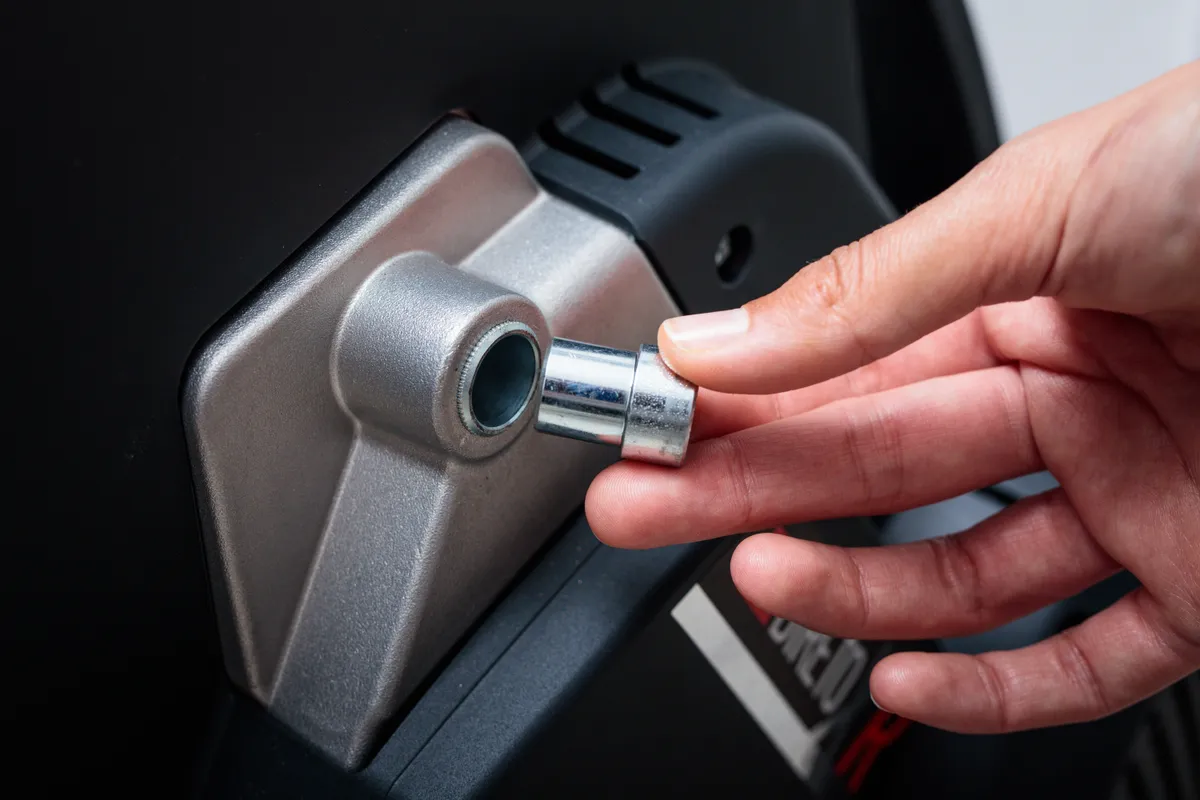
In terms of recently-launched competitors, it’s worth noting the Wahoo Kickr is around £175 more expensive, and while both include an 11-speed Shimano cassette, the Direto XR comes with a riser block included as well (though the Kickr technically doesn’t need one).
The Saris H3, which at £849.99 / $999.99 is more closely matched to the Directo XR, only comes with a riser block, and cheaper options such as the Kickr Core don’t include any of these accessories.
This essentially means many (if not most) people will have pretty much everything they need to get going straight out of the box (except a bike, of course), which is great. You may wish to add a trainer mat to catch sweat and dirt or oil from your bike, but that's not essential.
In the event you need a different cassette, you may need to purchase a freehub separately. Campagnolo, SRAM XD/XDR and Shimano Microspline freehubs are available from UK Elite dealers for £39.99, or directly from Elite in Italy for €46.49.
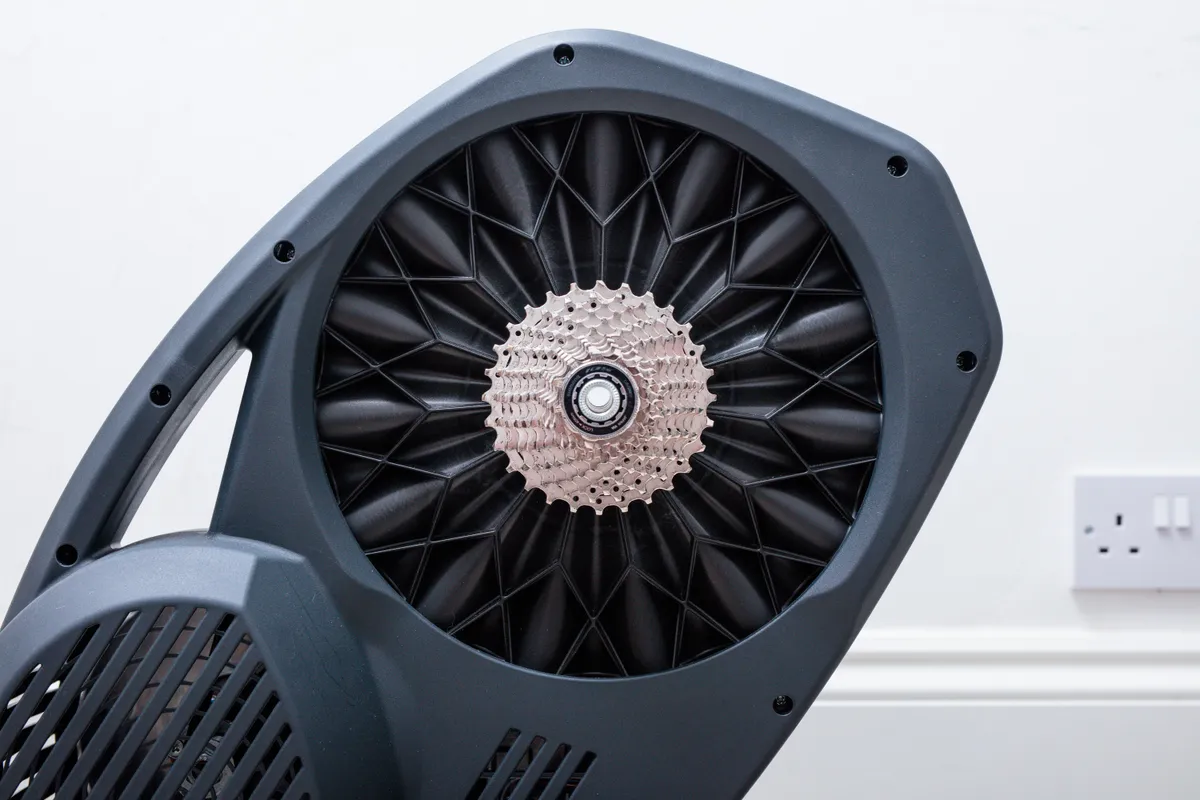
Inwardly, there have been bigger changes compared to the Direto X. The size of the flywheel has increased from 4.2kg to 5.1kg, which is an increase of more than 20 per cent.
The Direto XR can now simulate gradients up to 24 per cent, up from 18 per cent on the Direto X. That’s actually 4 per cent higher than the Wahoo Kickr and Saris H3’s 20 per cent maximum simulated gradient, and 9 per cent higher than that of Elite’s Suito.
However, unless you routinely ride with Zwift’s trainer difficulty setting at 100 per cent (the default setting is 50 per cent – meaning the effective gradient you feel at the trainer is half what’s displayed on screen), or are very concerned with accurately simulating outdoor rides on very steep hills on your smart trainer, I’d argue this isn’t really something you’ll notice on a day-to-day basis.
Likewise, the Direto XR’s maximum power is 2,300 watts – 100 watts higher than that of the Kickr, 300 watts higher than the Saris H3 and 400 watts higher than the Elite Suito. But again, only the Robert Förstemann’s of this world are likely to notice differences at this end of the scale.
Elite Direto XR setup
The Direto XR comes fully setup out of the box, with everything you need to get started included. All you need to do is put down the trainer mat, fold the legs out, plug the unit into the mains and attach your bike.
The legs have fixing bolts with large plastic knobs on them, which need to be screwed and unscrewed by hand in order to release and lock them. Unfortunately, they’re located on the underside of the legs, so the trainer does need to be turned over to access them, and it’s a shame the legs don’t have quick-release mechanisms.
It’s not difficult to do by any means, but it is a bit of a chore if you don’t have a dedicated space for your indoor cycling, and have to set up and stow the trainer away before and after every session.
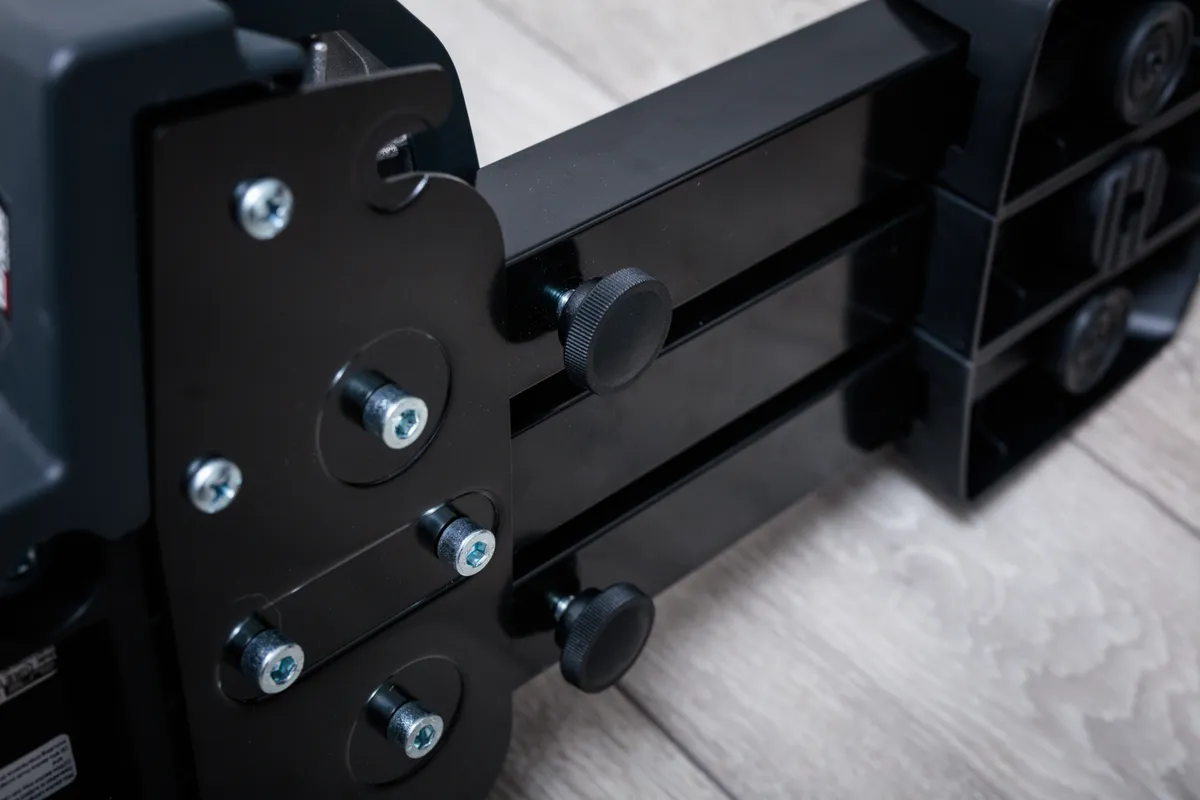
The included power cable is 2.5 metres long, so you shouldn’t need an extension lead, and once plugged in the trainer was quickly found by Zwift – running on a Macbook Pro using Bluetooth.
Alternatively, you can connect to a cycle computer, laptop, smartphone or tablet via ANT+ or ANT+ FE-C, if your device supports those or you have a dongle accessory.
Elite Direto XR ride quality
The new, larger flywheel contributes to a good ride feel, with a decent amount of inertia (the feeling of forward momentum you get when riding in the real world).
It can’t quite match the pricier Wahoo Kickr and its 7.25kg flywheel, or the Saris H3 and its 9kg flywheel, but in practice the difference isn’t likely to affect your indoor cycling experience that much.
The resistance unit is quick to respond to changing gradients, or ERG mode power shifts if you’re using the trainer to automatically control power output (during interval training sessions, for example), meaning what you see on screen is reflected by the trainer almost instantaneously.
It’s also pleasingly quiet. Perhaps a touch louder than the Kickr when you’re working hard, but all things considered it’s perfectly acceptable – my drivetrain and large fan both make more noise.
Elite Direto XR power meter and accuracy
Elite claims the internal power meter is accurate to +/- 1.5 per cent, and that it can measure up to 220 data points per pedal stroke. This allows it to offer pedalling analysis data, similar to power meter pedals by the likes of Garmin or Favero.
Elite says this data can be used to help you train for a more efficient pedal stroke and improve your performance, but it’s only available when using Elite’s My E-Training platform.
My E-Training allows you to ride virtual video courses or use your GPS data, and create training plans and workouts. A voucher for 12 free months of the platform is included with the Direto XR, but it costs €19.95 a year after that.
For those who want to try third-party apps, free trial coupons are also included for popular apps such as Zwift (1 month), Rouvy (30 days) and Kinomap (2 months).
To test the accuracy of the inbuilt power meter, I compared power data from my test rides to my two current benchmark power meters: an Infocrank Classic and a set of Favero Assioma Duo pedals.
On the whole, the data shows the Elite Direto XR tracks my on-bike power meters very well.
I didn’t experience any cadence or power dropouts during testing, and it returned consistent data on a day-to-day basis, even before performing routine spin-down calibration tests.
It would be ideal if the Direto XR had an auto-calibration function like the Kickr, but my testing nevertheless indicates it should return reliable data without the need for constant calibration.
If you do need to perform a spin-down calibration – and I’d recommend performing one after you get the unit out of the box, after moving it, or if your training location has experienced a temperature fluctuation – doing so is quick and simple, and can be done in-game on Zwift or via Elite’s My E-Training app for iOS or Android.
Elite also has an iOS and Android app called Upgrado for updating the Direto’s firmware. As usual with smart trainers, it’s worth periodically checking for new firmware updates because the unit won’t automatically update itself.
Elite Direto XR overall
Elite’s Direto XR is a quiet and reliable smart trainer, with good ride feel and accurate power measurement.
It has excellent specs for the money, and the value proposition is only improved by the inclusion of accessories like the cassette and riser block.
The external build quality doesn’t quite live up to some of its peers, but whether this has any bearing on long-term performance for the majority of riders is debatable.
Overall, though, the Direto XR is a great option for any serious indoor cyclist.
Product
| Brand | elite |
| Price | 849.99 EUR,824.99 GBP,949.99 USD |
| Weight | 15.8000, KILOGRAM () - with cassette |
Features
| br_mount | direct_drive |
| br_foldingLegs | yes |
| br_trainerType | smart_trainer |
| br_resistanceType | electromagnetic |
| br_wheelSize | 26in |
| br_wheelSize | 27_5in_650b |
| br_wheelSize | 29in_700c |
| br_connectivity | antPlus |
| br_connectivity | antPlus_fe_c |
| br_connectivity | ble |
| br_connectivity | bluetooth |
| br_deviceCompatibility | android |
| br_deviceCompatibility | ios |
| br_deviceCompatibility | mac |
| br_deviceCompatibility | windows |
| br_maxPower | 2300.0000 |
| br_maxPower | WATT |
| br_flywheelWeight | 5.1000 |
| br_flywheelWeight | KILOGRAM |
| br_maxGrade | 24.0000 |
| br_dimensions | 55cm x 65 cm |
